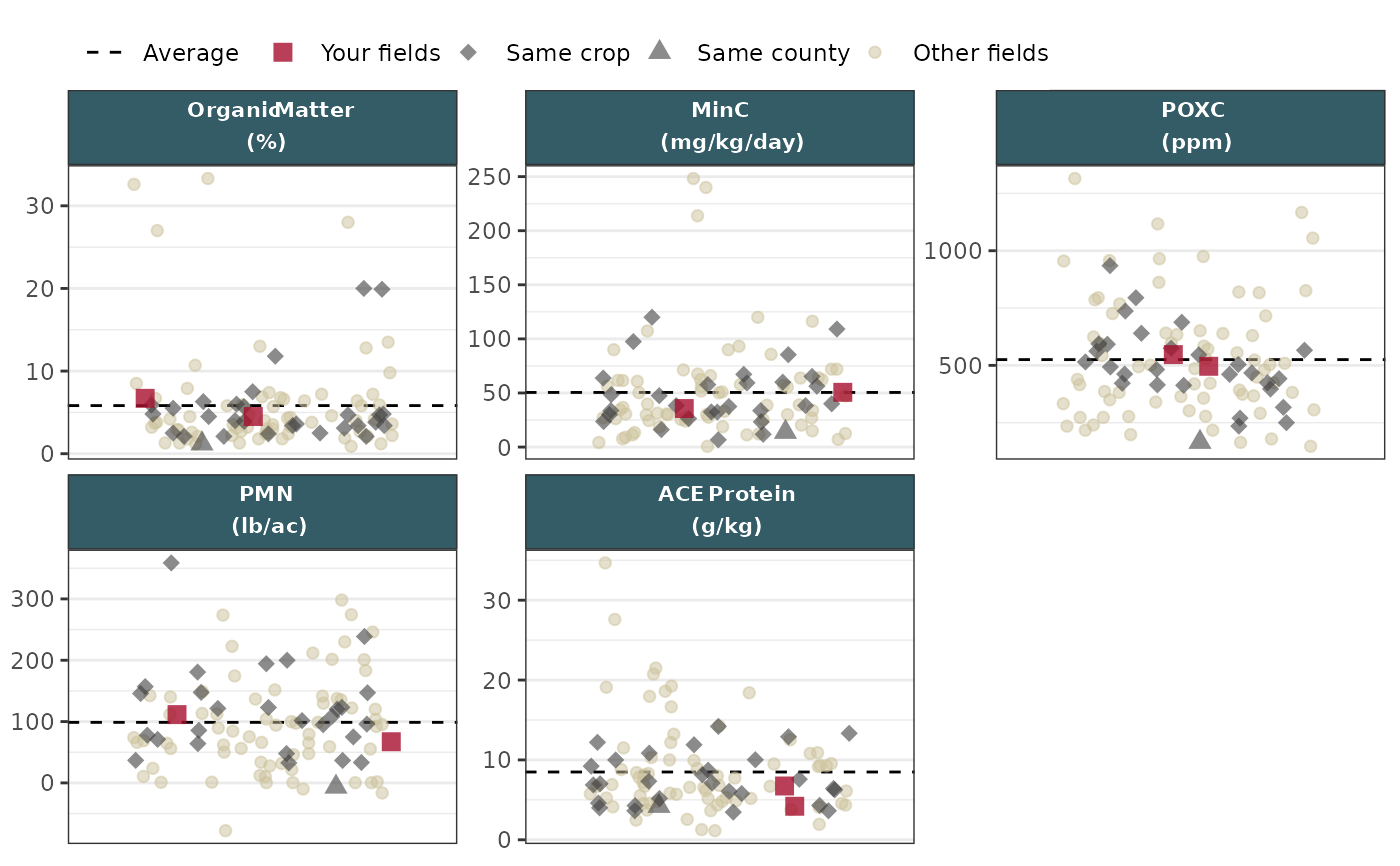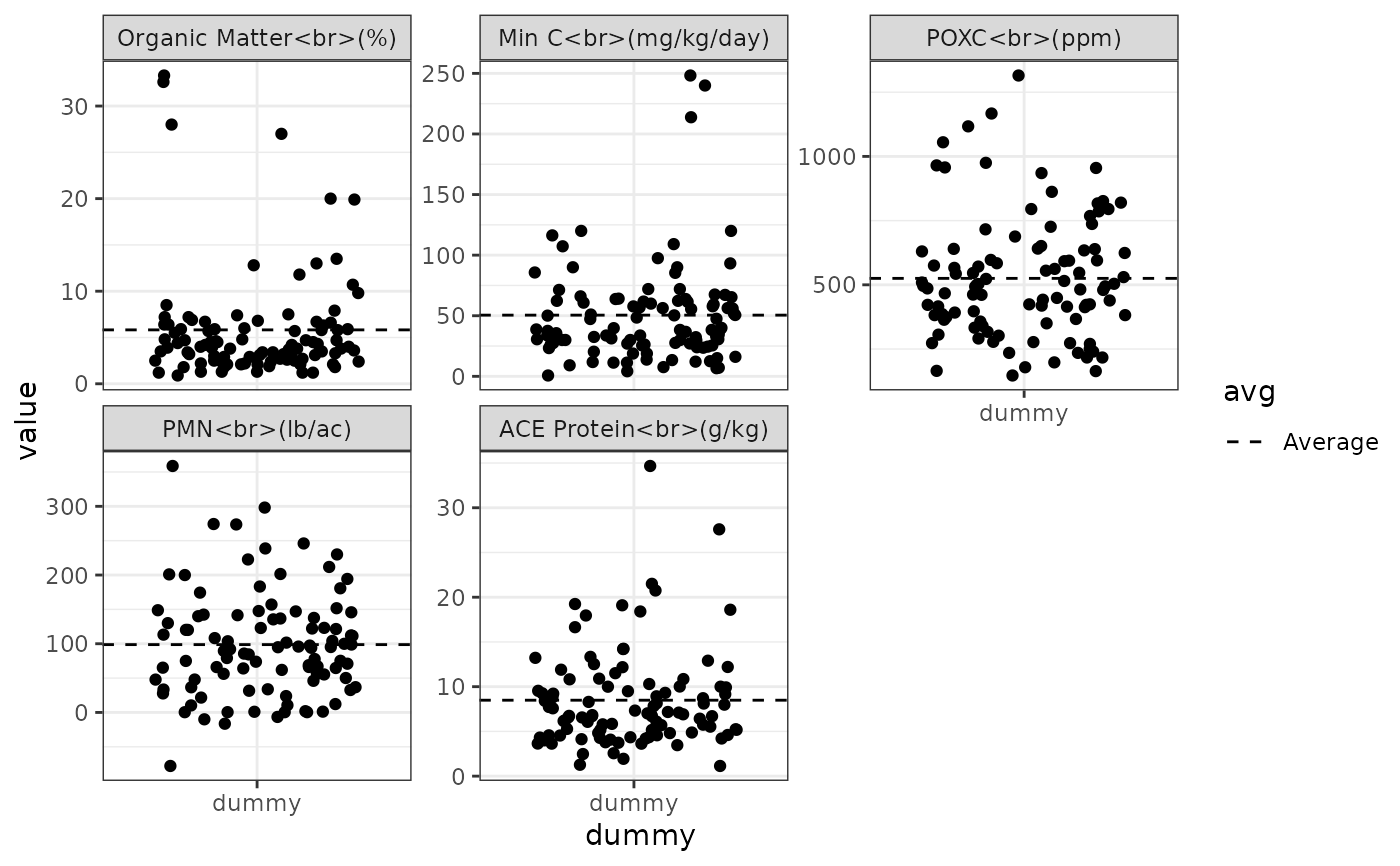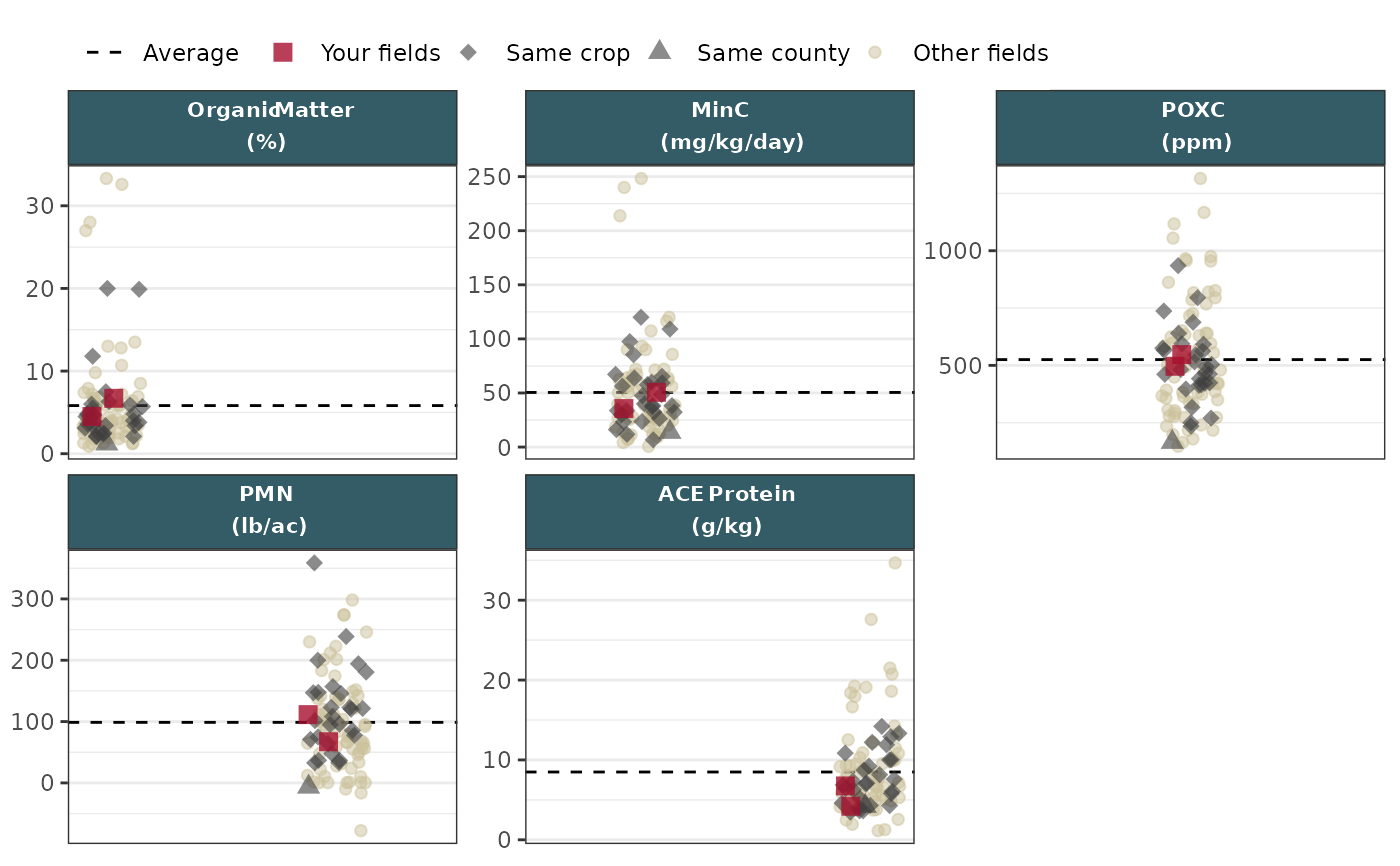Make a facetted strip plot
Usage
make_strip_plot(
df,
...,
x = dummy,
y = value,
id = sample_id,
group = abbr_unit,
tooltip = label,
language = "English"
)Arguments
- df
Data frame to plot.
- ...
Other arguments passed to
graphics::points().- x
Column for x-axis. For these strip plots, we recommend using a dummy variable to act as a placeholder. Defaults to a column named
dummywith only one value ("dummy") for all rows.- y
Column for y-axis. Defaults to
value.- id
Column with unique identifiers for each sample to use as
data_idfor interactive plots. Defaults tosample_id.- group
Column to facet by. Defaults to
abbr_unit.- tooltip
Column with tooltip labels for interactive plots.
- language
Language of the legend.
"English"(default) or"Spanish".
Examples
# Read in wrangled example plot data
df_plot_path <- soils_example("df_plot.RDS")
df_plot <- readRDS(df_plot_path)
# Subset df to just biological measurement group
df_plot_bio <- df_plot |>
dplyr::filter(measurement_group == "biological")
# Make strip plot with all measurements and set scales based on
# the category column and then apply theme.
# NOTE: the plot gets piped into the `set_scales()` function, which gets
# added to `theme_facet_strip()`.
make_strip_plot(
df_plot_bio,
x = dummy,
y = value,
id = sample_id,
group = abbr_unit,
tooltip = label,
color = category,
fill = category,
size = category,
alpha = category,
shape = category
) |>
set_scales() +
theme_facet_strip(body_font = "sans")
 # Example of strip plot without scales or theme functions
make_strip_plot(df_plot_bio)
# Example of strip plot without scales or theme functions
make_strip_plot(df_plot_bio)
 # Example of strip plot with `x` set to the facet group instead of a dummy
# variable. The dummy variable is what centers the points within the subplot.
make_strip_plot(
df_plot_bio,
x = abbr_unit,
y = value,
id = sample_id,
group = abbr_unit,
tooltip = label,
color = category,
fill = category,
size = category,
alpha = category,
shape = category
) |>
set_scales() +
theme_facet_strip(body_font = "sans")
# Example of strip plot with `x` set to the facet group instead of a dummy
# variable. The dummy variable is what centers the points within the subplot.
make_strip_plot(
df_plot_bio,
x = abbr_unit,
y = value,
id = sample_id,
group = abbr_unit,
tooltip = label,
color = category,
fill = category,
size = category,
alpha = category,
shape = category
) |>
set_scales() +
theme_facet_strip(body_font = "sans")

